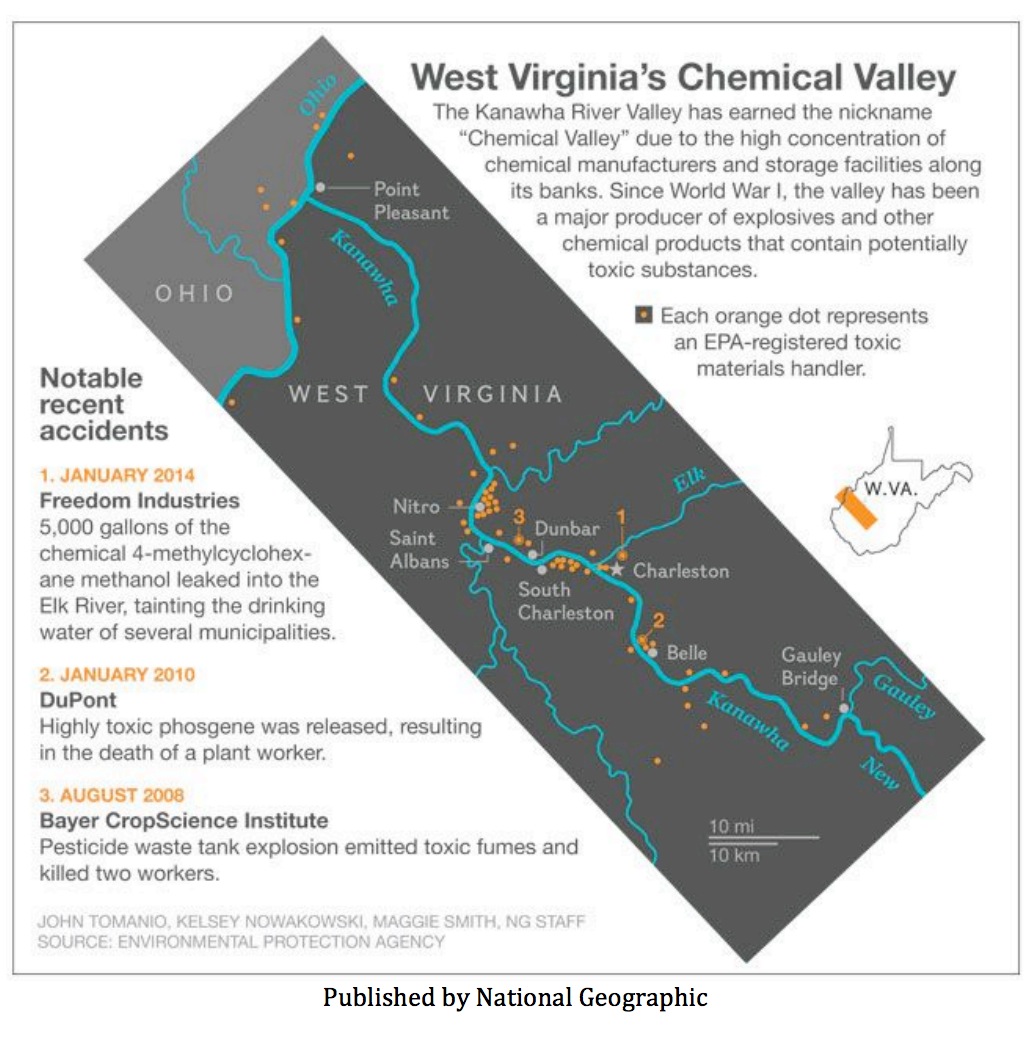BOSTON ACTION RESEARCH
CIVIL SOCIETY INSTITUTE
Executive Summary
What became West Virginia American Water (WVAW, a subsidiary of American Water Co., the largest private water company in the country) formed in 1886. Since then, the company has expanded to serve 40% of West Virginia’s population, purchasing and entering into public-private contracts with Public Service Districts and towns across the state.
WVAW’s strategy reflects that of its parent, which is to keep expanding to spread the costs of infrastructure to more ratepayers in order to control costs. WVAW attempted to do just that, purchasing and entering into contracts with smaller rural communities around its hub utilities in Huntington and Charleston. However, the strategy has not worked in West Virginia. As the infrastructure ages and deteriorates due to apparent neglect, the water system experiences high leak rates, plus frequent boil water notices when mains fail. Repairs and deferred investment require considerable infusions of cash, leading to frequent rate hike increases.
While the rate cases and interrupted customer service shine light on WVAW’s inability to control customer costs, the Freedom Industries chemical spill of January 9, 2014 shows how unprepared the company is to deal with disasters. WVAW’s lack of preparation exposed about 300,000 customers to a toxic chemical and left them without water for up to nine days.
Customer experience with West Virginia American Water is similar to the experience of other American Water Company customers around the country. Indeed, the inadequate and widely criticized operations of private water companies globally have fomented a movement to remunicipalize privatized water utilities. The trend was accelerated when Paris remunicipalized (took back public ownership and management of) its water system in 2010. The U.S. is experiencing a similar backlash against privatized water utilities, including more than 50 cities and towns nationwide.
WVAW serves as an example of how things can go wrong when transparency and accountability suffer in a privatized water scheme. The company pursued a strategy of underinvestment to boost support of its profit margin for some time. It chose a confrontational approach with regulators in the state, complaining of its regulatory treatment, cutting employees and unilaterally attempting to set minimal service standards. But a change in company tone toward regulators has occurred in WVAW’s most recent rate case seeking a 28 percent hike in 2015. Although the company’s approach is more diplomatic, its business plan is the same: easier access to ratepayer dollars. A catalyst for the difference in company demeanor is the emerging support among public utility commissions1 across the country, generally, for pay-as-you-go rate mechanisms that allow water utilities to avoid rate cases by recovering dollars as they invest in infrastructure. These mechanisms are referred to as automatic rate adjustment mechanisms, trackers or surcharges or single-issue rate making, which tend to bolster utility profits while shifting financial risk to ratepayers. Another strategy is to substantially increase the flat monthly customer charge. In addition, private water companies are lobbying Congress for easier access to taxpayer financing to support their infrastructure investments.
The problem comes down to this: Private water utilities are competing with publicly owned and operated water utilities for public dollars because public financing is cheaper than private financing. Moreover, the evidence clearly shows that private water companies are no more efficient and, at times, less efficient than public companies in delivering water services. The end result is that the promised advantages of privatization (access to new financing and better service) have not materialized. The bottom line is that there is no advantage to having a private water company over a public water company in terms of service delivery. And public water companies have a big advantage in terms of cost. Private companies have a fiduciary responsibility to stockholders to pay dividends, which ultimately results in higher water bills for customers; public water companies pay no dividends.
There is an option for West Virginia customers, should they decide to pursue it. West Virginia law provides avenues to municipalize private water systems or remunicipalize water systems formerly under public control, including the ability to finance such takeovers with bonding and to seek federal and other state support. State law also allows for the creation of regional water authorities. The legislature could also adopt legislation to allow for public ownership and operation of the Kanawha Valley water system. Legal analysis is required to determine the most appropriate approach.
This will not be an easy proposition. American Water is certain to offer strenuous resistance, as it has in other regions in the country when customers have decided to move against the company. It will require coordination and public and policymaker education. However, public ownership and management of West Virginia water systems would allow the public to adequately plan for needed investments, most likely enhance transparency in water operations, and serve as a means to better control costs by removing the short-term profit motive and the diversion of much-needed funds from the community for the purpose of paying dividends.
In the broader scheme of things, it appears that the competition for public dollars between public and private water companies will increase, as local political and private industry pressure for federal taxpayer dollars mounts. Indeed, despite historically large local government investments, infusion of federal taxpayer dollars seems almost inevitable to upgrade the country’s water infrastructure. This once again begs the question of why the public should support private water utility profit margins when public ownership and management can accomplish this more efficiently and inexpensively.
About the Civil Society Institute
www.civilsocietyinstitute.org
“Insight into programs that have and have not worked in recent years has led Civil Society Institute to a unique model for addressing society’s most pressing problems…Simply stated, our approach lies in the way we serve as catalysts for change, especially in areas of critical need: global warming and global security and economic change and science policy and regenerative medicine.”
Tags: Boston Action Research, Civil Society Institute, West Virginia, West Virginia American Water, WV, WVAW







 RSS Feed
RSS Feed